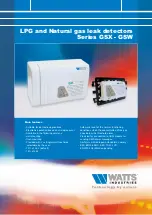
12
13
• Ka Narrow 34.3 — second red Signal Strength LED
• Ka Narrow 34.7 — third red Signal Strength LED
• Ka Narrow 35.5 — fourth red Signal Strength LED
4. Full illumination of the LED confi rms feature is ON.
Flashing of the LED confi rms feature is OFF. Use the
AUD button to make your selection.
5. Press the PWR button to retain your new settings for
Selectable Features. Two “beeps” will confi rm that
you have exited from Selectable Features. Your unit
will be ON and ready for operation.
Understanding Radar, Laser and SWS
Three Radar Frequencies
Three microwave frequencies have been allocated by
the FCC (Federal Communications Commission) and
are used for traffi c Radar. They are:
X band: 10.45–10.60 GHz
K band: 24.050–24.250 GHz
Super Wideband Ka: 33.4–36.0 GHz
Both X and K bands are well known to motorists who
have traveled with Radar detectors. Introduced fi rst
was X band Radar which became common during the
1960s. In the mid 1970s, the lower powered, more
diffi cult to detect K band Radar was introduced. In
1987, FCC approval was given for use of Radar
equipment using a third frequency, Ka. In response to
this, BELTRONICS introduced the fi rst Radar
detectors capable of detecting X, K and Ka band
signals. In late 1990, FCC approval was given to
Wideband Ka: 34.2 GHz to 35.2 GHz. Once again,
BEL responded with Wideband Ka detection. Today,
your 975e can detect Super Wideband Ka. To turn
this on, see selectable options section.
Safety Warning System (SWS) – What is it?
The Radio Association Defending Airwave Rights, Inc.
(R.A.D.A.R) conceived and developed the Safety
Warning System. The concept behind this system is to
warn motorists of potential road hazards by
employing Safety Warning System transmitting
devices in areas such as construction zones, accident
sites and detours. Because these SWS transmitters
operate within the 24 GHz portion of the K band
frequency, their signals are detected by your unit.
Interpretation of Alerts
Radar Alerts
The alerts provided by your unit are affected both by
the type of transmission (continuous wave or instant-
on) and the position of the Radar source. Generally,
when you drive closer to a Radar source the intensity
of the received signals increases, resulting in a greater
number of LEDs illuminating in the four-LED display
(l or r) and a corresponding increase in the audio
alert rate. Described on the following pages are fi ve
common types of Radar encounters and the alerts you
will typically receive.
1. Stationary or moving Radar, straight ahead aimed in your
direction.
23499_BEL_975eOM.indd 13-14
23499_BEL_975eOM.indd 13-14
5/14/07 9:38:39 AM
5/14/07 9:38:39 AM






























